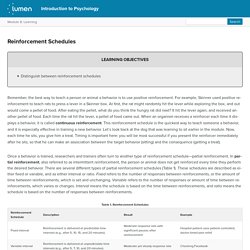

Influence with teenage children's behaviour. Discipline Strategies - Behavioural Management for Teenagers. Teenage discipline: the basics Discipline isn’t about punishment.

It’s about guiding children towards appropriate ways to behave. For teenagers, discipline is about agreeing on and setting appropriate limits and helping them behave within those limits. When your child was younger, you probably used a range of discipline strategies to teach him the basics of good behaviour. Now your child is growing into a teenager, you can use limits and boundaries to help him learn independence, take responsibility for his behaviour and its outcomes, and solve problems. Your child needs these skills to become a young adult with her own standards for appropriate behaviour and respect for others. Teenagers don’t yet have all the skills they need to make all their own decisions, so the limits you agree on for behaviour are an important influence on your child.
Teenage discipline is most effective when you: Negotiation is a key part of communicating with teenagers and can help avoid problems. Here’s how. Reinforcement & Punishment. Skinner’s Operant Conditioning: Reinforcements & Punishments. Introduction to Psychology. Learning Objectives Distinguish between reinforcement schedules Remember, the best way to teach a person or animal a behavior is to use positive reinforcement.

For example, Skinner used positive reinforcement to teach rats to press a lever in a Skinner box. At first, the rat might randomly hit the lever while exploring the box, and out would come a pellet of food. After eating the pellet, what do you think the hungry rat did next? Once a behavior is trained, researchers and trainers often turn to another type of reinforcement schedule—partial reinforcement. Now let’s combine these four terms.
With a variable interval reinforcement schedule, the person or animal gets the reinforcement based on varying amounts of time, which are unpredictable. 14 Best Examples Of Operant Conditioning. Operant conditioning, also known as instrumental conditioning, is a method of learning that employs punishments and rewards for behavior.

In this method, a link is established between a behavior and a consequence (whether positive or negative) for that behavior. For example, when a monkey presses a button when a LED is on, he receives a banana as a reward. When he presses the button when the LED is off, he receives a mild electric shock. As a result, he learns to press the button when the LED is on and avoids it when the LED is off. Actually, the monkey forms a link between the behavior (press the button when LED lights up) and the consequences (get a banana). Operant conditioning was first thoroughly studied by an American psychologist Edward Lee Thorndike in the late 19th century.
As per the law, actions that result in favorable outcomes have a higher probability of being repeated, while those followed by unfavorable outcomes are less likely to be repeated. 14. 13. 12. 11. Positive Reinforcement for Adolescents. By the time children have reached adolescence, their responses are often ingrained, but parental actions can still positively affect adolescent behavior.

Since adolescents are struggling to develop their personal identity and are concerned about their body image, parental support is crucial to help positively frame experiences as learning opportunities. Positive reinforcement remains a powerful teaching tool during these formative years, and we encourage parents to take time to contemplate the ways they can help adolescents mature and become self-reliant. Reinforce mature decisions by allowing increased privileges when adolescent demonstrates increased responsibility. For instance, an adolescent who consistently demonstrates the ability to come home at the requested time might be allowed a later curfew - whereas an adolescent who has not completed requested chores will not be allowed to leave home that evening.Express pleasure at positive adolescent behavior.
Parenting Teens: When It Comes To Learning, Positive Reinforcement Trumps Punishment. Teens generally aren’t afraid to defy authority.

Generations of parents know this, having tried different strategies for getting their adolescents to do what they ask — often in attempts to keep them safe and help pave a path toward success. Now, a new study shows that rewards, rather than punishments, could be the way to get them to cooperate. Researchers at the University College London asked 18 volunteers aged 12 to 17 and 20 volunteers aged 18 to 32 to complete both a learning task and post-learning task in which they chose between abstract symbols, each associated with a fixed chance of reward, punishment, or no outcome.
As the trial progressed, participants learned which symbols were likely to lead to each result and adjusted their choices accordingly. Adults and teens alike proved equally capable of learning to be motivated by rewards, but the adults learned to avoid symbols associated with punishment while the adolescents did not. Source Stefano Palminteri, Emma J. How to Reward Your Teen for Good Behavior. Teenagers are young adults who are trying to learn the ways of the world.

When they do something great at school or at home or simply make a healthy decision, parents can give them a reward. The reward does not have to be money, but it is a nice way to say "thank you" or "I'm proud of you. " Teens need this positive reinforcement because it shows them that they are on the right track.1 It is also a good life lesson that you can pass on: good things happen to good people. Using Positive Reinforcement. Positive Reinforcement - Tips for teaching and parenting.